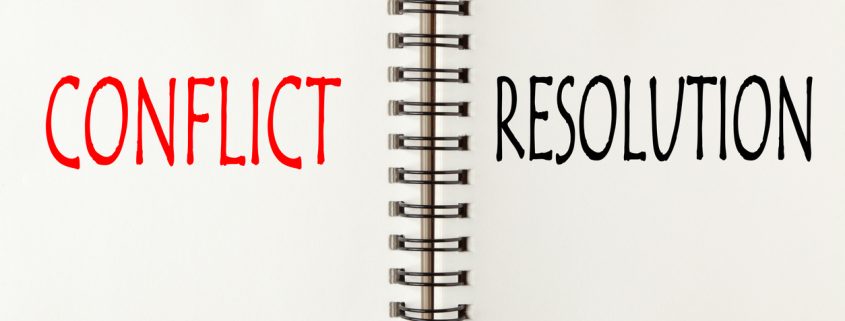Workplace Conflict Resolution: Everything You Need to Know
What is Conflict Resolution?
Introduction
Conflict is an inevitable aspect of life, whether in our personal lives with family or friends or at work with our colleagues, leaders or clients. At work, people from a multitude of backgrounds and personalities are brought together with the purpose of working towards shared business goals.
Conflict in the workplace is a natural, everyday part of human interaction. as not all conflict is unproductive or unhealthy, disagreeing or arguing with a coworker can be beneficial. Unfortunately, workplaces often handle conflict poorly, and many conflicts or disputes are left unresolved. Therefore, resolving conflicts and conflict management is one of the biggest challenges workplaces face.
Working from home and hybrid working due to the pandemic has not changed this fact. Learning how to deal with it becomes the pivotal factor in dealing with conflict – when left unresolved, it often has damaging, long-lasting effects on the overall health of the working environment.
What is work conflict?
Simply put, a conflict is a disagreement between two or more people. Of course, not all disagreements need to be ‘handled’ or dealt with by the organisation. For example, people can disagree about how a particular task should be done or where to go for afternoon Friday drinks.
This is regular interaction. It does not call for any intervention. so when does a situation qualify as a workplace conflict that does require intervention? Action needs to be taken when the parties blame each other for causing the conflict, they are emotionally impacted by the conflict, and the issue is impacting their optimal work performance. When these factors are present, it is time for the organisation to get involved.
Common causes of Conflict
Some of the leading causes of conflict are:
- Personality differences (Personality clashes and ego battles are the leading cause of workplace conflict internationally (49%)
- Poor communication
- Employment conditions (the most common types of conflict in Australian workplaces are around employment conditions, supervisor/line manager decisions, personality conflicts and uncivil behaviour (Van Gramberg, Teicher, Bamber & Cooper, 2017)
- Unclarified roles or job descriptions
- Perceived inequities of resources
- Workplace behaviours regarded as uncivil such as bullying and harassment
- Differences over work methods or goals or differences in perspectives attributable to age, sex or upbringing.
Cost of Workplace Conflict
There are many costs to an organisation. For example, in the UK, it is estimated that 9.7 million employees experienced conflict in 2018 to 2019 (Acas, 2021). Workplace conflict in the US is estimated to cost $359 billion annually in lost time and productivity (CPP Global Human Capital).
The most serious costs of conflict are the following:
- High employee turnover – When conflict is ongoing or extreme, workplaces will lose talented employees to other organisations, especially with a strong job market. For example, in the UK, an average of 485,000 employees resign annually due to conflict. The cost of recruiting replacement employees amounts to 2.6 billion pounds each year, while the cost to employers of lost output as new employees get up to speed amounts to 12.2 billion pounds, an overall estimate of 14.9 billion pounds each year (Acas, 2021).
- Absenteeism and presenteeism – Employees will often choose to steer clear of work to avoid dealing with conflict or to delay a confrontation. Others may come to work but not perform to their usual standard. In the UK, 874,000 employees are estimated to take sick leave each year due to conflict, at an estimated cost to their organisations of 2.2 billion pounds (Acas, 2021). Most of those suffering from stress, anxiety and/or depression due to conflict continue to work. this ‘presenteeism’ harms productivity, with an annual cost estimated between 590 million and 2.3 billion pounds (Acas, 2021).
- Grievances, complaints and lawsuits – Issues should be preferably handled informally, if possible, and from the outset to avoid things from spiralling out of control. This reduces the cost to both the workplace and the employees involved in the conflict. it also reduces the need to arrange independent, third-party interventions costing more time and money. For example, 30% of a typical manager’s time is spent dealing with disputes. (Queensland Government).
- Emotional stress & anxiety –conflict will often escalate out of control, and the emotional cost is often enormous and goes hand in hand with an increase in grievances, a high turnover of staff, absenteeism and a toxic workplace.
- A toxic workplace – conflict left to fester will ultimately permeate throughout the organisation, causing a fracture in relationships, distrust, low morale and toxicity.
What is conflict resolution?
Conflict resolution is the process of ending disputes and reaching an agreement that satisfies all involved parties. It is not about avoiding disagreements but rather about facilitating discussions to increase the parties’ understanding of the situation and to help them control their emotional responses. Conflict resolution is an important skill for all leaders and managers to attain.
Whether it is the parties themselves attempting to resolve the conflict or a manager/HR or team leader, the following steps are a necessary part of the process.
i. Preparation Stage
- Understanding the conflict.
- Identifying the issue, the facts, and the frequency.
- Asking: does it fit the definition of a conflict?
- Arranging a safe space to hold the meeting.
ii. Holding the meeting
- Tell the parties you have a conflict situation and that you are going to help them resolve it.
- Set ground rules such as maintaining respect and non-interruption of the other party.
- Get the parties’ perspectives and understand each of their needs.
- Focus on the problem, not the individual.
- Listen. Do not interrupt.
- Ask questions and ensure both sides of the conflict have been aired and understood.
- Ask a lot of open questions and TED (tell, explain and describe) questions.
- Be empathetic. remember, perception is 100% of the conflict. This involves getting rid of labels, biases and assumptions.
- Discuss several possible options and outcomes which will hopefully help all parties find a solution they can support.
iii. Agree on a solution and a plan of action
- Agree on a mutually convenient compromise and create an action plan, designating specific actions for each party.
- Schedule a follow-up meeting to see if the proposed solution/s and plan of action are effective.
Benefits of Conflict Resolution
1. Identifying the actual problem
Often the most minor of disagreements can eventually blow up into major conflict. Issues must be addressed from the outset so things don’t fester and ultimately blow up. Managers must look for patterns of workplace behaviour that need to be addressed and nip those in the bud.
2. Increased problem-solving skills
Discussing issues and brainstorming options and solutions will develop problem-solving skills. When people are open to sharing their views, this results in solutions from diverse perspectives where ideas and solutions flow from healthy conversations.
3. Building strong relationships
Not dealing with conflict only suppresses the issues and ultimately destroys relationships. If employees feel comfortable using their voices to raise concerns and talk about issues, this can only strengthen their relationship with others and the organisation as a whole.
4. Improved Productivity
Conflict that is handled well will free people to focus on their jobs rather than on tensions in the office, leading to tighter productivity, efficiency and morale.












